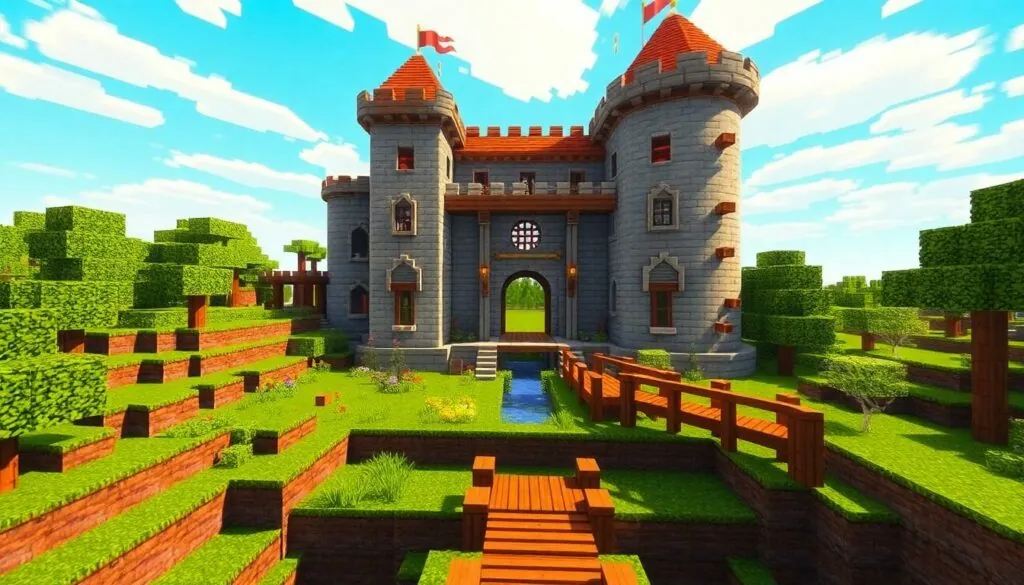In the pixelated realms of Minecraft, players often stumble upon something truly bizarre: liminal spaces. These eerie, in-between areas evoke a sense of nostalgia mixed with a hint of the uncanny. Picture a vast, empty hallway in a school that’s somehow both familiar and unsettling. It’s the perfect backdrop for your next adventure—or existential crisis.
Table of Contents
ToggleOverview of Minecraft Liminal Space
Minecraft liminal spaces represent unique areas within the game that impart a certain eeriness. Players often encounter expansive corridors, empty rooms, and desolate landscapes, all of which contribute to an unsettling yet captivating atmosphere. Each liminal space evokes feelings of nostalgia, inviting reflection on moments past while simultaneously provoking unease.
An example arises from a seemingly infinite school hallway, where echoes of footsteps emphasize isolation. This space becomes more than just a backdrop; it serves as a canvas for adventure and contemplation. Players explore these areas to uncover hidden secrets and engage in existential musings, leading to a richer gameplay experience.
Liminal spaces activate players’ imaginations. They inspire curiosity, encouraging exploration beyond the game’s traditional quests. These unusual environments engage players in ways typical biomes or structured locations do not. The juxtaposition of emptiness and potential creates a sense of wonder, making each encounter memorable.
Frequently, players share experiences in these spaces online. Discussions highlight personal interpretations of the same environment, showcasing diverse emotional responses triggered by similar settings. This shared narrative fosters a community bond, as players connect over their discoveries within Minecraft’s unconventional spaces.
Ultimately, Minecraft liminal spaces captivate users, merging the thrill of exploration with deeper emotional resonances. These areas stand as testaments to the game’s ability to evoke strong feelings and stimulate creative thinking.
Characteristics of Liminal Spaces in Minecraft
Liminal spaces in Minecraft exhibit distinctive traits that evoke unique emotions. Players encounter various visual elements that contribute to the unsettling yet captivating experience.
Visual Elements
Textures play a crucial role in creating a surreal aesthetic. Detailed block layouts highlight the emptiness of corridors and rooms. Sunlight filtering through cracked windows enhances the sense of desolation. Players often notice sparse furniture that suggests a once-active environment. The use of ambient lighting deepens the eerie atmosphere. Bright colors clash with muted shades, amplifying feelings of nostalgia. Distorted dimensions can also develop through architectural choices, skewing players’ perceptions of reality and heightening unease.
Soundscapes and Atmosphere
Soundscapes significantly impact the emotional experience within liminal spaces. Players frequently hear subtle sounds like distant echoes or the rustling of leaves. These noises amplify feelings of isolation, making environments feel larger and more desolate. Games include ambient music that shifts unexpectedly, adding to the overall tension. Silence often embraces players as they traverse these spaces, punctuated by the soft footsteps of their characters. An absence of conventional gameplay sounds fosters contemplation, allowing players to immerse themselves fully in the atmosphere. Overall, each auditory element plays a vital role in sharpening the experience of wandering through Minecraft’s liminal spaces.
Impact on Gameplay Experience
Liminal spaces in Minecraft significantly shape players’ experiences by altering perceptions of adventure and introspection. These environments encourage exploration and creativity, inviting unique interactions.
Exploration and Discovery
Players often find themselves wandering through vast, empty hallways or abandoned buildings. Each step in these liminal spaces uncovers hidden details and secrets. Discovering unexpected tunnels or rooms adds layers to the gameplay experience. Curiosity drives players to investigate corners and shadows, leading to memorable encounters. Rewards may include rare items or unique scenery. Players’ journeys through these vacuums result in both excitement and nostalgia. Each exploration deepens their connection to the game.
Creative Interpretation
Creativity flourishes in Minecraft’s liminal spaces. Various players interpret these areas differently, using them as backdrops for storytelling, art, or role-playing scenarios. Engaging with these spaces can inspire unique narratives that reflect personal experiences. Players transform desolate environments into playgrounds for imagination. Sharing these interpretations online cultivates a collaborative community spirit. Community members exchange their creations, sparking ideas for future gameplay. Each interpretation enriches the overall experience, showcasing the game’s potential beyond traditional mechanics.
Community Reactions and Theories
Community reactions to Minecraft’s liminal spaces vary widely, highlighting the emotional depth players experience. Many players express feelings of nostalgia while exploring expansive, empty hallways, often recalling personal memories from real-life settings. Some theories suggest these spaces serve as a reflection of the player’s subconscious fears and desires, creating a mirror effect that amplifies emotional engagement.
Online forums are filled with discussions about the eerie aesthetics and soundscapes that enhance the atmosphere. Enthusiasts point out specific elements, such as how ambient noises contribute to feelings of isolation and contemplation. Players often share screenshots and videos, illustrating their unique experiences within these unsettling environments. This sharing fosters a collaborative spirit, as others build upon these narratives, crafting new stories based on similar themes.
Another interesting aspect involves the interpretations of liminal spaces as metaphors for transitional phases. Gamers relate these areas to moments of change in their lives, seeing Minecraft’s landscapes as representations of uncertainty or exploration. The juxtaposition of desolation and beauty inspires players to create art, stories, or even music influenced by their journeys in these spaces.
Playtesting also sparks various theories, especially regarding how these liminal spaces affect gameplay. Participants note particular patterns, such as increased exploration and creativity during encounters with these environments. This phenomenon encourages the community to delve deeper into the design choices behind Minecraft, analyzing how developers craft these distinct areas to evoke specific feelings or thoughts.
Overall, players’ engagement in these discussions signifies the importance of communal interpretation, allowing diverse perspectives to emerge as they collectively explore the significance of liminal spaces in their gaming experiences.
Conclusion
Minecraft’s liminal spaces offer a unique blend of nostalgia and unease that captivates players. These eerie environments serve as more than mere backdrops; they inspire exploration and creativity while inviting players to reflect on their experiences. The emotional depth found in these spaces fosters a sense of community as players share their discoveries and interpretations.
As they navigate through expansive corridors and empty rooms, players uncover hidden narratives that enrich their gameplay. The interplay of visuals and soundscapes enhances the atmosphere, making every encounter memorable. Ultimately, Minecraft’s liminal spaces challenge players to confront their thoughts and feelings, turning each adventure into a personal journey of discovery.







